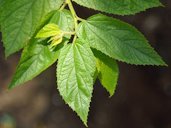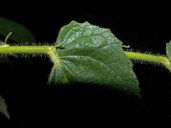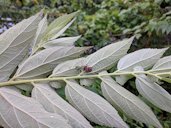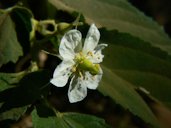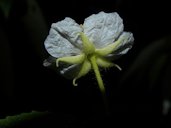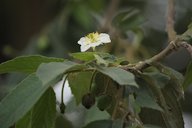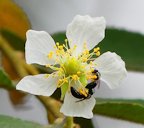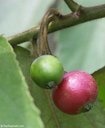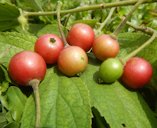| Jamaica Cherry - Muntingia calabura | |||||||||||||||||||||||||||
|---|---|---|---|---|---|---|---|---|---|---|---|---|---|---|---|---|---|---|---|---|---|---|---|---|---|---|---|
 Fig. 1  Muntingia calabura 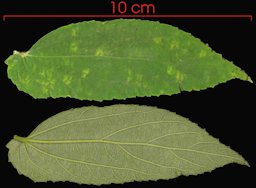 Fig. 2  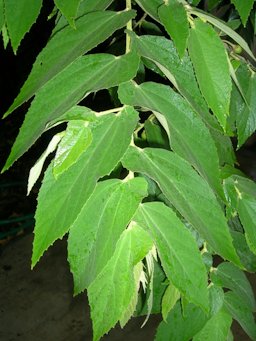 Fig. 3  M. calabura leaf habit 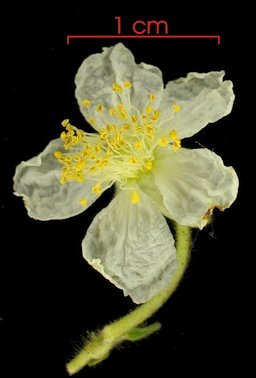 Fig. 7  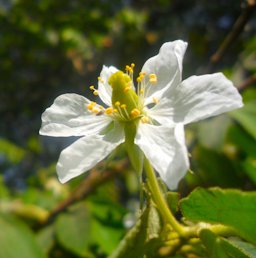 Fig. 8  M. calabura flower habit 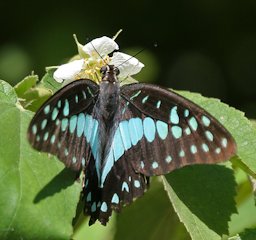 Fig. 9  Common jay, Graphium doson in Hyderabad, India 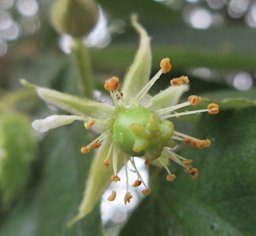 Fig. 10  Calabur tree M. calabura, Thai Nguyen, Vietnam 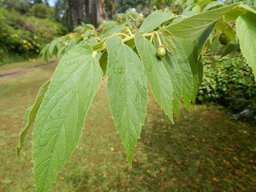 Fig. 15  M. calabura (Jamaican cherry, strawberry tree). Leaves and immature fruit at Pali o Waipio Huelo, Maui, Hawai'i. 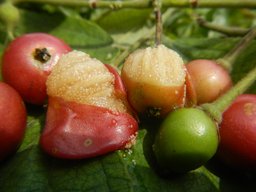 Fig. 16  Flowers, fruits and seeds of Aratiles (M. calabura Linn.) trees in the Philippines 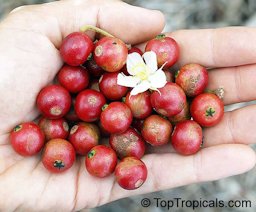 Fig. 17  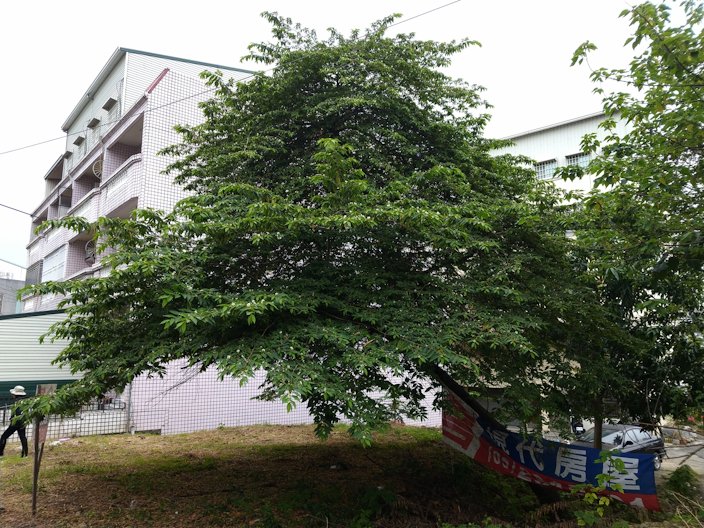 Fig. 23  Calabur tree M. calabura, Chiayi city, Taiwan 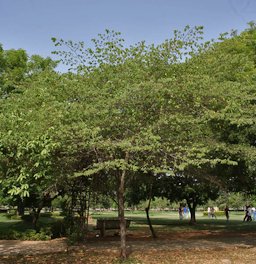 Fig. 24  Singapur cherry M. calabura in Hyderabad, India 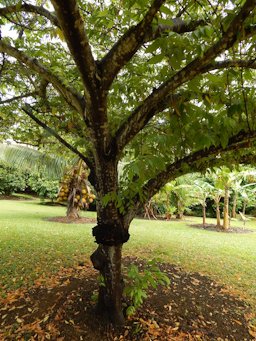 Fig. 25  M. calabura trunk at Pali o Waipio Huelo, Maui, Hawai'i  Fig. 26  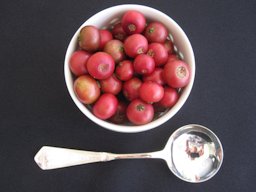 Fig. 28  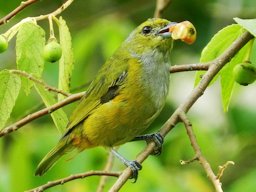 Fig. 29  |
Scientific
name Muntingia calabura L. Common names English: calabur, cherry tree, cotton candy berry, Jamaican cherry, Panama berry, Panama cherry, Panama-berry, strawberry tree, strawberrytree; Spanish: capulí, capulín, cereza, majagua, nigüito; Polynesia: monomona; Argentina: cedrillo majagua; Australia: bird cherry; Belize: calabur tree, capuleen; Bolivia: ovillo, uvilla,uvillo; Brazil: calabura, cereja-das-Antilhas, pau-de-seda; Cambodia: kakhop, krakhob barang; Colombia: acurruco, chirriador, chitato, majaguito, nigua, tapabotija 8 Other Common Names Synonyms M. calabura var. trinitensis Griseb., M. rosea H.Karst., M. glabra Spreng. 5 Family Muntingiaceae (muntingia family), formerly Elaeocarpaceae or Flacourtiaceae Origin Southern Mexico, the Caribbean, Central America, and western South America 6 USDA hardiness zones 10-12 6,7 Uses Fruit; small shade tree; backyard tree; large planter; specimen; xerophytic 6 Height 25-40 ft (7.5-12 m) 1 Crown Irregular or pyramidal canopy 2 Plant habit Slender tree with spreading, nearly horizontal branches that start close to the ground, sometimes drooping at the tips 2 Growth rate Extremely fast growing Leaves Semi-deciduous; simple; oblong and pointed at the ends; hairy on the underside 1 Flowers Small; white; borne in leaf axils; wilt withing hours after they form Fruit Berry; round; reddish or yellowish; pulp juicy, musky sweet; minute seeds 7 Season All year on mature trees; flowering and fruiting are interrupted in Florida during the 4 coolest months Light requirement Full sun Soil tolerances No special soil requirements Wind tolerance Branches are prone to breakage in strong winds 10 pH preference 5.5-6.5 9 Soil salt tolerance Not salt tolerant 9 Cold tolerance 28 °F (-2.2°C) Plant spacing 20-26.3 ft (6-8 m) apart 11 Invasive potential * None reported Pest resistance No serious pests have been reported, apart from bats and birds which are their distributors 7 Known hazard Falling fruit and bird droppings containing fruit remnants can stain walks and patios 2 Reading Material Jamaica Cherry, Fruits of Warm Climates Muntingia calabura, World Agroforestry Center This Tree's a 'Sweety', Archives of the Rare fruit Council of Australia Muntingia calabura L., PROSEA Foundation In Florida, it has been nicknamed strawberry tree because its blooms resemble strawberry blossoms, but strawberry tree is a well-established name for the European ornamental and fruit tree, Arbutus unedo L., often cultivated in the western and southern United States, and should not be transferred to the Jamaica cherry. 1 It is the only species in the genus Muntingia in the Muntingiaceae family, formerly Elaeocarpaceae or Flacourtiaceae. 10 Origin/Distribution M. calabura is native to tropical America, from Mexico to northern Argentina, but despite not being commercially cultivated has since become pantropical. In the West Indies, as well as Brazil, it has been considered as either native or introduced. Introduced in USA (Florida, California) and the Galápagos Islands. Also widely present and naturalized in Southeast Asia, Australia, Papua New Guinea, New Caledonia, and many other Pacific Islands. Reported also for Spain, New Zealand, East Africa (Kenya, Tanzania), and some islands in the Indian Ocean (Seychelles, Maldives, Sri Lanka, Christmas Island and Cocos Islands). 8 Description Fast growing Muntingia calabura forms a distinctive, wide, arching parasol of horizontally layered, softly downy, oblique leaves that are 2-ranked and coarsely toothed. Because its little, drab white blooms are reminiscent of strawberry flowers, M. calabura is known as Strawberry Tree is some regions. 7
Leaves Leaves simple, ovate-lanceolate, 1.5- 5.5 in. (4-14 cm x 1-4 cm), with prominent asymmetry of the leaf blade base; leaf margin serrate. 9 The upper surface is dark green with minute sticky hairs and the underside is grey or brown hairy. Normally an evergreen, it does shed most of its leaves in places where there is a marked dry season. 11
Fig. 4. Leaves of M. calabura, Bogor, West Java, Indonesia Fig. 6. Peucetia viridana with prey on M. calabura leaves Flowers The hermaphrodite flowers 1/4-1/2 in. (1.25-2 cm) wide are born in the leaf axils, singly or in twos or threes with 4-9 days between sequential openings of the individual flowers. Five fine green sepals and five white, sometimes light pink, petals surround many prominent yellow stamens. A range of floral forms exist from flowers with large pistils and a few stamens to flowers with reduced pistils and over 100 stamens. The flowers that open early have fewer stamens and larger pistils. 11
Pollination A series of remarkable pedicel movements lifts each flower bud above the plane of the plagiotropic shoot just before anthesis and turns the flowers to a pendent position within 2 days from fruit set. Thus the flowers are conspicuous to pollinators and segregated from the concealed fruit. This favours bats and birds as the main dispersers of the seed and reduces the likelihood of them damaging the flowers. 12 The long-stalked flowers are borne continuously at leaf axils on the underside of twigs but last only a day, falling in the afternoons. 7 The species is self-compatible and intensive pollination is needed to reach the normal number of several thousand seeds per fruit. 9
Fruit The abundant fruits are round, 3/8 to 1/2 in (1-1.25 cm) wide, with red or sometimes yellow, smooth, thin, tender skin and light-brown, soft, juicy pulp, with very sweet, musky, somewhat fig-like flavor, filled with exceedingly minute, yellowish seeds, too fine to be noticed in eating. 1 The fruit ripens in 6-8 weeks from anthesis and the life span of the mature leaf is only slightly longer. 9 The berries are sold in local Mexican markets and are very popular in the Philippines with children. In most cases it is not a plant cultivated for its fruit and they are usually gathered from spontaneous trees. 11
Fig. 18. Jamaica cherry fruit mature and unripe Fig. 19. M. calabura (Quả cây trứng cá) Fig. 20. Fruits of Aratiles (M. calabura Linn.) trees in the Philippines Cultivars None established but yellow and white skinned types are known. 10 Propagation Brazilian planters sow directly into the field fresh seeds mixed with the sweet juice of the fruit. To prepare seeds for future planting, water is added repeatedly to the squeezed-out seeds and juice and, as the seeds sink to the bottom of the container, the water is poured off several times until the seeds are clean enough for drying in the shade. 1 Seedlings flower within two years. Air layers made for home gardens fruit straight away. The seedlings do not tolerate shade. 9 Culture This tropical to near tropical tree grows up to 4000 ft (1200 m) in elevation and can withstand occasional low night temperatures, although it does better in a warm, humid climate. It needs at least 40 in. (1000 mm) annual rainfall. The tree tends to grow in cliffs or river banks, but does not tolerate salt of waterlogged conditions, preferring good drainage. 11 The tree is not particular in its soil requirements; however it thrives on a general fertilising with generous mulching and watering. It will grow quite comfortably in full sun. 4 Pests In Florida, in recent years, the fruits are infested with the larvae of the Caribbean fruit fly. 1 Caribbean Fruit Fly, Anastrepha suspensa (Loew), University of Florida pdf Diseases The foliage is subject to leaf spot caused by Phyllosticta sp. and Pseudocercospora muntingiae (formerly Cercospora muntingiae), and the tree is subject to crown gall caused by Agrobacterium tumefaciens. 1 Food Uses The fruit is widely eaten by children as it is sweet. They usually climb up the tree and pick the fruits by hand, or sometimes shake the tree and wait for the fruits to drop. The fruit is also cooked in tarts and made into jam. The leaf infusion is drunk as a tea-like beverage. 12 Nutrient Content Jamaica cherry fruit contains 77.8 g moisture, 0.324 g protein, 1.56-g fat, 4.6 g fibre, 124.6 mg calcium, 84.0 mg phosphorus, 1.18 mg iron, 0.019 mg carotene, 0.065 mg thiamine, 0.037 mg riboflavin, 0.554 mg niacin and 80.5 mg ascorbic acid per 100 g of edible portion. 1 Medicinal Properties ** In Asia, a decoction of the leaves becomes an antidiarrhetic, a bark decoction is used as an emollient, and an infusion of the flowers for headache relief. 4 The flowers are said to possess antiseptic properties. An infusion of the flowers is valued as an antispasmodic. It is taken to relieve headache and the first symptoms of a cold. 1 Other Uses A tough, silk-like fibre can be obtained from the bark and is used for lashing supports and making rope. It is also used for basket making. 7 The sapwood is yellowish, the heartwood red-dish-brown, firm, compact, fine-grained, moderately strong, light in weight, durable indoors, easily worked, and useful for interior sheathing, small boxes, casks, and general carpentry. It is valued mostly as fuel, for it ignites quickly, burns with intense heat and gives off very little smoke. Jamaicans seek out trees blown down by storms, let them dry for a while and then cut them up, preferring this to any other wood for cooking. It is being evaluated in Brazil as a source of paper pulp. 1 General Capulin is a typical pioneer species, colonizing disturbed sites in tropical lowlands which can sustain continuous growth. In South-East Asia it is one of the most common roadside trees, especially in the drier parts such as in eastern Java. It establishes itself in trodden yards and along shop fronts where no other tree takes root. 9  Fig. 27  Fig. 27. M. calabura distribution map, wild populations Jamaica Cherry Botanical Art List of Growers and Vendors |
||||||||||||||||||||||||||
| Bibliography 1 Fruits of Warm Climates. Julia F. Morton, Miami, 1987. 2
Boning, Charles. Florida's Best Fruiting
Plants: Native and Exotic Trees, Shrubs and Vines. Sarasota,
Pineapple Press, 2006. Video v1 Byron, Martin. "Growing the Strawberry Tree (Muntingia calabura)." LogeesPlants, www.logees.com, (CC0), www.youtube.com/watch?v=Bup4WBP9wG4. Accessed 27 Mar. 2024. PhotographsFig. 1 Praveen T. "Calabur Tree Muntingia calabura, Karnataka, India." iNaturatlist, Research Grade, 14 Aug. 2021, (CC BY-SA 4.0), Image cropped, www.inaturalist.org/observations/91092875. Accessed 26 Mar. 2024. Fig. 2,4,7,21,22 Paton, Steve. "Muntingla calabura L." Environmental Sciences Program, Smithsonian Tropical Research Institute, STRI, stri.si.edu. Accessed 7 Feb. 2015. Fig. 3 Shyamal, L. "Muntingia calabura." Wikimedia Commons, 2006, (CC BY 2.5), commons.wikimedia.org. Accessed 15 Jan. 2017. Fig. 4 Djatmiko, Wibowo. "Leaves of Muntingia calabura. Bogor, West Java, Indonesia." Wikimedia Commons, 3 Oct. 2015, GFDL, (CC BY-SA 3.0), (CC BY-SA 2.0), (CC BY-SA 1.0), commons.wikimedia.org/wiki/File:Munting_calab_151003-0368_tdp.JPG. Accessed 12 Nov. 2022. Fig. 5,12 Aguilar, Reinaldo. "Peucetia viridana with prey." Wikimedia Commons, 2013, Flickr, (CC BY-NC-SA 2.0), flickr.com. Accessed 7 Feb. 2015. Fig. 6 Vengolis. "Muntingia calabura." Wikimedia Commons, 12 Aug. 2018, (CC BY-SA 3.0), commons.wikimedia.org/w/index.php?curid=71549127. Accessed 26 Mar. 2024. Fig. 8 riyanto, Aris. "Muntingia calabura." Wikimedia Commons, 12 Sept. 2019, (CC BY-SA 4.0), Image cropped, commons.wikimedia.org/wiki/File:(Arya)_muntingia_calabura_flower.jpg. Accessed 12 Nov. 2022. Fig. 9 Garg, J. M. "Common Jay Graphium doson in Hyderabad, India." Wikimedia Commons, 14 Sept. 2008, GFDL, (CC BY-SA 4.0), (CC BY-SA 3.0), (CC BY-SA 2.5), (CC BY-SA 1.0), commons.wikimedia.org/wiki/File:Common_Jay_(Graphium_doson)_on_Singapur_Cherry_(Muntingia_calabura)_W_IMG_9602.jpg. Accessed 12 Nov. 2022. Fig. 10 onidiras. "Calabur Tree Muntingia calabura, Thai Nguyen, Vietnam." iNaturatlist, Research Grade, 3 Apr. 2023, (CC BY-SA 4.0), Image cropped, www.inaturalist.org/observations/153308475. Accessed 26 Mar. 2024. Fig. 11 Valke, Dinesh. "Muntingia calabura. Elaeocarpaceae (Jamaica cherry family)." Flickr, 2007, (CC BY-SA 2.0), flickr.com. Accessed 16 Jan. 2017. Fig. 13 Primejyothi. "Singapore Cherry flower and fruit, India." Wikimedia Commons, 29 July 2013, (CC BY-SA 3.0), commons.wikimedia.org/wiki/File:Muntingia_calabura_8406.JPG. Accessed 12 Nov. 2022. Fig. 14 Ramanathan,Subbu. "Calabur Tree Muntingia calabura, Karnataka, India." iNaturatlist, Research Grade, 4 Apr. 2022, (CC BY-SA 4.0), Image cropped, www.inaturalist.org/observations/110387618. Accessed 26 Mar. 2024. Fig. 15 Starr, Forest, and Kim. "Muntingia calabura (Jamaican cherry, strawberry tree). Leaves and immature fruit at Pali o Waipio Huelo, Maui, Hawai'i." Flickr, 2014, (CC BY-SA 2.0), flickr.com. Accessed 16 Jan. 2017. Fig. 16 Judgefloro. "Flowers, fruits and seeds of Aratiles (Muntingia calabura Linn.) trees in the Philippines." Wikimedia Commons, 14 Aug. 2017, Public Domain, commons.wikimedia.org/wiki/File:06695jfFlowers,_fruits_and_seeds_of_Aratiles_Muntingia_calabura_Bulacanfvf_19.jpg. Accessed 12 Nov. 2022.Fig. 17,18 "Muntingla calabura L." Top Tropicals, toptropicals.com. Accessed 7 Feb. 2015. Fig. 19 Pinus. "Muntingia calabura L. Quả cây trứng cá." Wikipedia, 2012, (CC BY-SA 3.0), wikipedia.org. Accessed 15 Jan. 2017. Fig. 20 Judgefloro. "Flowers, fruits and seeds of Aratiles (Muntingia calabura Linn.) trees in the Philippines." Wikimedia Commons, 14 Aug. 2017, Public Domain, Image cropped, commons.wikimedia.org/wiki/File:06695jfFlowers,_fruits_and_seeds_of_Aratiles_Muntingia_calabura_Bulacanfvf_10.jpg. Accessed 12 Nov. 2022. Fig. 23 emiemi. "Calabur Tree Muntingia calabura, Chiayi city, Taiwan ." iNaturatlist, Research Grade, 4 Apr. 2020, (CC BY-SA 4.0), Image cropped, www.inaturalist.org/observations/41359083. Accessed 26 Mar. 2024. Fig. 24 Garg, J. M. "Singapur cherry Muntingia calabura in Hyderabad, India." Wikimedia Commons, 2008, (CC BY-SA 3.0), (GFDL), commons.wikimedia.org. Accessed 15 Jan. 2017. Fig. 25 Starr, Forest, and Kim. "Muntingia calabura (Jamaican cherry, strawberry tree). Trunk at Pali o Waipio Huelo, Maui, Hawai'i." Flickr, 2014, (CC BY 2.0), flickr.com. Accessed 16 Jan. 2017. Fig. 26 Bradley, Keith. "Muntingia calabura." Institute for Systematic Botany, University of South Florida, Tampa, S. M. Landry and K. N. Campbell (application development), USF Water Institute, 2022, Atlas of Florida Plants, florida.plantatlas.usf.edu/photo.aspx?ID=2743. Accessed 11 Nov. 2022. Fig. 27 Wunderlin, R. P., et al. "Muntingia calabura." Institute for Systematic Botany, University of South Florida, Tampa, S. M. Landry and K. N. Campbell (application development), USF Water Institute, 2022, Atlas of Florida Plants, florida.plantatlas.usf.edu/Plant.aspx?id=1551. Accessed 11 Nov. 2022. Fig. 28 Jackson, Karen. Jamaica Cherry series. 2913, www.growables.org. Fig. 29 Zumkeller,Maria Cristina. "Birds most attracted to the plant Calabura, Muntingia calabura." Wikiaves, 15 Feb. 2012, (CC BY-NC-SA 4.0), commons.wikimedia.org. Accessed 15 Jan. 2017. * UF/IFAS Assessment of Non-native Plants in Florida's Natural Areas ** Information provided is not intended to be used as a guide for treatment of medical conditions. Published 5 Feb. 2015 LR. Last update 12 April 2025 LR |
|||||||||||||||||||||||||||
